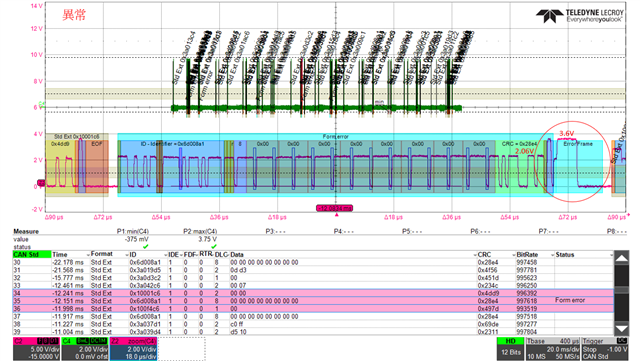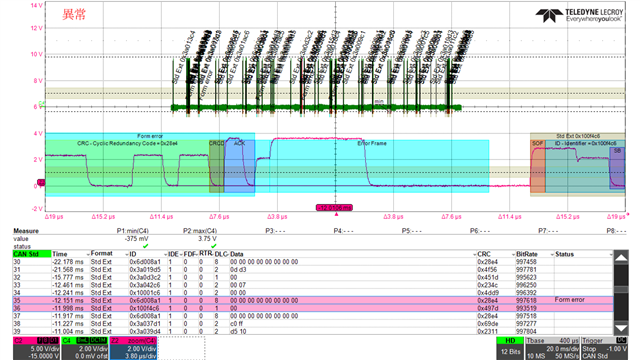Hi Team,
My customer can easily find error frame when they increase the devices on the CAN bus.
Is there any guidance to solve this problem?


Regards,
Charles
This thread has been locked.
If you have a related question, please click the "Ask a related question" button in the top right corner. The newly created question will be automatically linked to this question.
Hi Team,
My customer can easily find error frame when they increase the devices on the CAN bus.
Is there any guidance to solve this problem?


Regards,
Charles
Charles,
Since a form error is being detected, the opposite bit is detected than what is expected. That is, a dominant is detected when it should be recessive, and vice versa. This may be due to timing and delay added by adding more nodes to the CAN bus. Can you try adjusting your sample point, and the transmitter delay compensation in your controller?
Regards,
Eric Hackett
Hi Eric,
Thanks for your reply!
BTW, I am also wondering about the input resistance spec of CAN transciever, will this influence CAN signal integrity as well? And what do RID, RIN specs mean?
Regards,
Charles
Charles,
The resistance parameters will ultimately affect how many nodes can be placed on the CAN bus. This is due to the leakage current introduced with each node added, and then how much current the transmitting node can drive to the bus. If there are too many nodes (too much resistance added in parallel which changes the overall bus termination resistance), then the CANH and CANL waveforms can be attenuated to the point of not passing the thresholds for the receiver.
How many nodes are on the customer's CAN bus when they start seeing errors? From the waveforms shared it doesn't look like too many nodes is the issue, it still looks like a timing issue.
Regards,
Eric Hackett